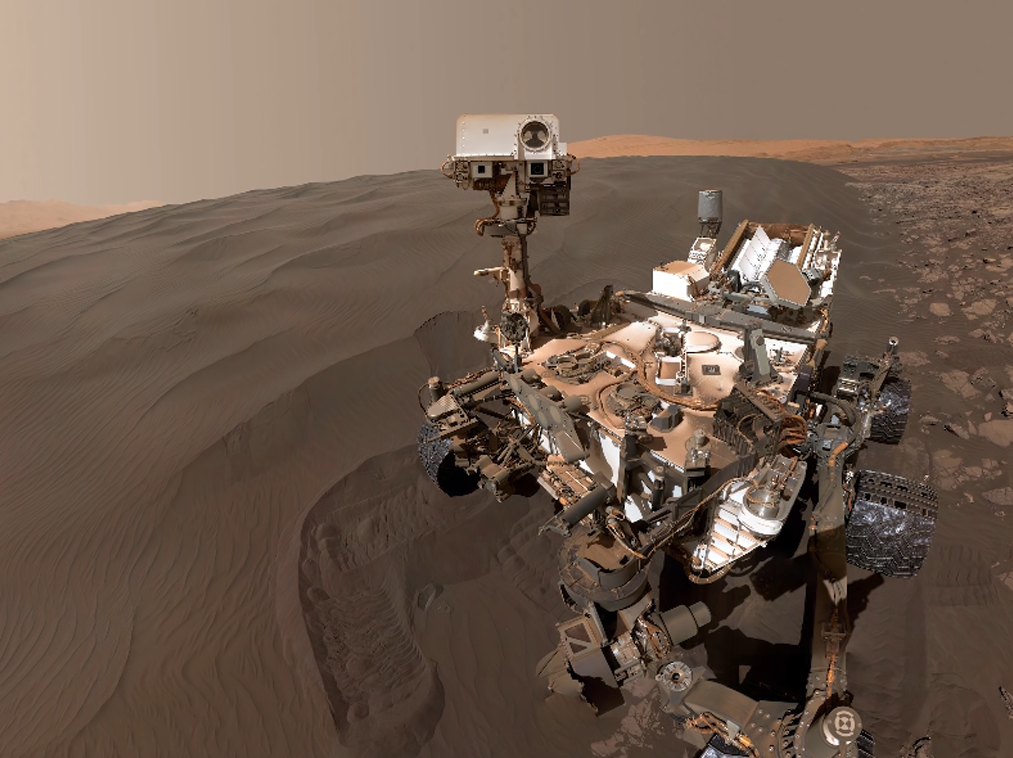Nasa rover images upscaled to 4K, giving most realistic experience of being on red planet
The video has been described as ‘the most lifelike experience of being on Mars’

Your support helps us to tell the story
From reproductive rights to climate change to Big Tech, The Independent is on the ground when the story is developing. Whether it's investigating the financials of Elon Musk's pro-Trump PAC or producing our latest documentary, 'The A Word', which shines a light on the American women fighting for reproductive rights, we know how important it is to parse out the facts from the messaging.
At such a critical moment in US history, we need reporters on the ground. Your donation allows us to keep sending journalists to speak to both sides of the story.
The Independent is trusted by Americans across the entire political spectrum. And unlike many other quality news outlets, we choose not to lock Americans out of our reporting and analysis with paywalls. We believe quality journalism should be available to everyone, paid for by those who can afford it.
Your support makes all the difference.Pictures taken from the surface of Mars by Nasa’s rovers have been remastered into 4K resolution, giving an even clearer look at the surface of the Red Planet.
British YouTubers ElderFox Documentaries took stills sent from Nasa’s Curiosity, Spirit, and Opportunity rovers and ‘upscaled’ them, splicing them together into a video.
They have described it as ‘the most lifelike experience of being on Mars’.
Among the images are captures of the Meridiani Planum, a plain near Mars’ equator, where tracks from the Opportunity rover can be seen.
The Gale Crater, Cape Verde, the Santa Maria Crater, 'Pillinger Point, and the entrance to the Marathon Valley are also shown.
Many images have been “stitched together” to create a panorama of the Martian surface, the video’s narrator explains.
Depending on how many images are available, some panoramas have black sections because of a lack of suitable pictures.
While these could be avoided by zooming into the image, the YouTubers decided to have them remain so that the image resolution was not compromised.
All of the images are in the public domain and available on Nasa’s site.
Many of the images have been recoloured by Nasa, changing the hazy red colours of the Martian sky to bluer colours – similar to that on Earth.
That is done so geologists can better study rock formations.
One image of the Glen Torridon area (which is named after the Scottish hills) is “the largest mosaic ever put together”, the video claims, with 1.8 billion pixels.
It was made from over 1000 images sent from Curiosity between 24 November and 1 December 2019.
The Glen Torridon area has been theorised to contain a large amount of clay, which points towards Mars having once had water and increasing the likelihood that it holds life.
When the missions were launched, the cameras on board the rovers were the “height of technology”, according to the video’s narrator. Spirit and Opportunity were launched in 2003 and Curiosity was launched in 2011.
However, the rate at which the rovers can send data back to Earth is significantly lower than our connections at home, which makes it near-impossible to transmit video back to Nasa.
Curiosity can only send data back to Earth at 32kbps (kilo-bits per second). The average download speed in the UK has been recorded as 22.37Mbps, more than one thousand times faster than that of the rover.
When Curosity can link to the Mars Reconnaissance Orbiter, it can send images at a speed of 2Mbps, but that is only available for approximately eight minutes every Martian day. It is the only rover still operating on Mars.
Nasa’s next Mars rover, called Perseverance, is set to launch later this month and arrive on Mars in February 2021.
It will deploy a helicopter called Ingenuity that Nasa hopes will be able to provide a new dimension to images taken from the planet.
It could also be used to carry payloads, and investigate caves and craters easily. The lower gravity and thin atmosphere on Mars, however, makes flying extremely challenging.
Recently, both China and the UAE successfully launched their first missions to Mars. The Hope Probe, from the UAE, was sent from Japan’s Tanegashima Space Center for seven-month journey having overcome delays twice.
China’s Long March 5 Y-4 rocket, meanwhile, is expected to reach Mars in February where it will deploy a rover called the Tianwen-1 (or “Questions to Heaven”) to explore the planet’s surface for 90 days.
Join our commenting forum
Join thought-provoking conversations, follow other Independent readers and see their replies
Comments